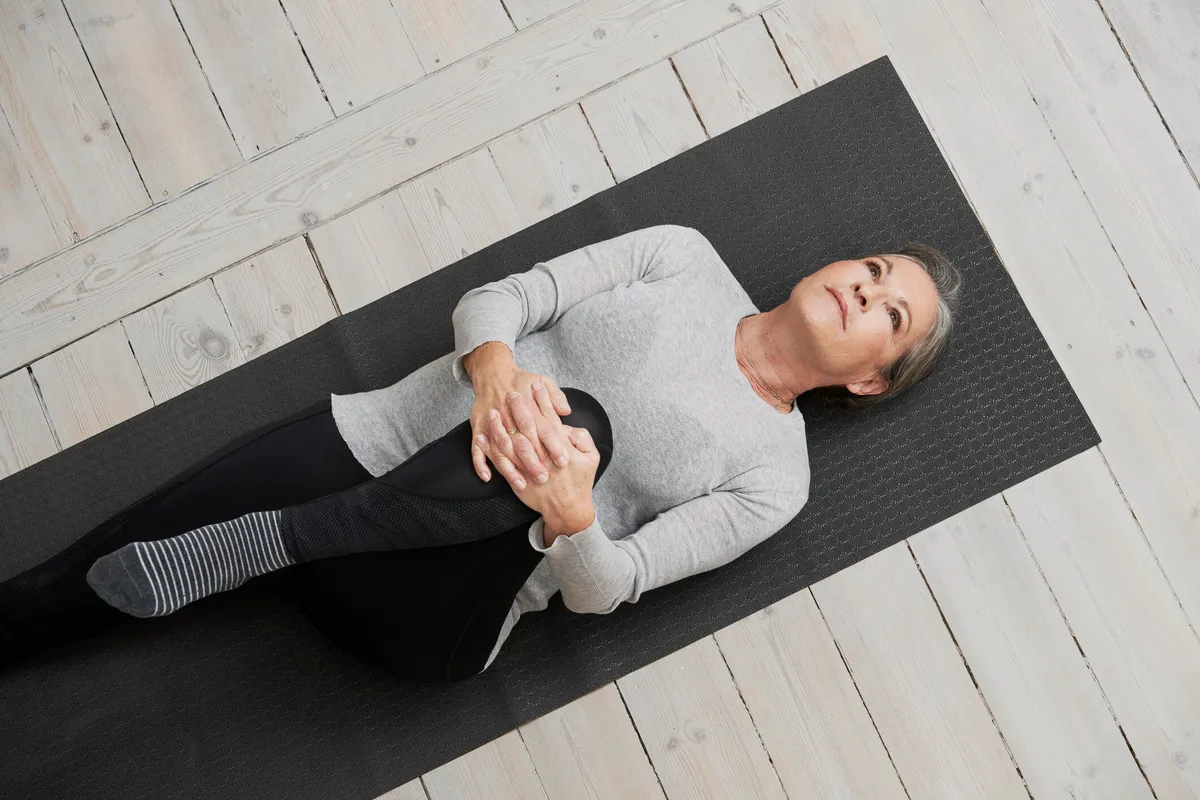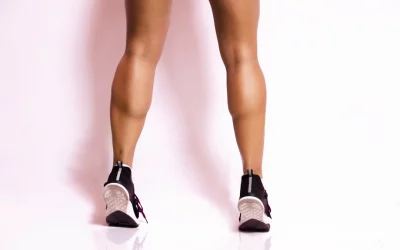Hip pain can feel like a roadblock, turning everyday tasks and favorite workouts into sources of discomfort. While stretching is a go-to remedy for many, not all stretches are created equal. The wrong moves can not only fail to help but may even worsen the pain or create new problems. The key? Knowing how to target the right muscles with stretches that relieve discomfort without adding strain to the hip joint.
The good news is that you don’t have to navigate this alone. In this article, we’ll guide you through expertly chosen stretches designed to ease hip pain safely and effectively, helping you reclaim both comfort and mobility.
How Hip Pain Affects Your Daily Life
Hip pain affects more than just your hip. It can make simple daily activities like walking, standing, or even sitting uncomfortable. When every step feels like a struggle, your ability to move freely is limited, and this can take a toll on your overall quality of life.
For many, hip pain becomes worse at night. This can disrupt your sleep, which is important for your body’s recovery. A lack of rest can lead to a cycle of fatigue and discomfort that impacts your energy levels during the day.
Another effect of hip pain is that it can reduce your range of motion. When your hips feel stiff or tight, it becomes harder to bend, stretch, or even rotate your legs. As a result, activities you once enjoyed, like exercising, climbing stairs, or even playing with your kids, might become difficult or impossible.
Effective Stretches to Alleviate Hip Pain
Butterfly Stretch
The butterfly stretch is an effective way to target the hip area. By sitting on the floor with your feet pressed together and your knees bent out to the sides, you place a gentle stretch on the hips and inner thighs. Sit up tall with your back straight, pulling your feet as close to your pelvis as comfortably as possible. Hold your feet or ankles with your hands for stability.
To deepen the stretch, hinge forward slightly from your hips while keeping your spine long. This stretch helps to open the hips, potentially reducing tension and discomfort in the area.
Maintaining proper posture is essential when performing the butterfly stretch. Keep your back straight, shoulders relaxed, and avoid slouching forward. Slouching could reduce the effectiveness of the stretch and lead to strain in other areas, like the lower back.
If you’re new to the butterfly stretch or find it difficult to keep your knees close to the ground, you can modify the movement. Consider placing cushions under your knees for added support. This adjustment can make the stretch more comfortable while still providing benefits for your hips.
Low Lunge Stretch
The low lunge stretch is a straightforward method for addressing hip pain, particularly by elongating and relieving tension in the hip flexors. In this stretch, you start in a kneeling position, step one foot forward, and sink your hips toward the ground. This movement creates a deep stretch in the front of your hip, which is often where tightness and discomfort occur.
To get the most out of this stretch, focus on maintaining proper alignment. Ensure that your front knee stays directly above your ankle while your back leg remains extended behind you. This helps protect your joints and ensures that you’re targeting the right muscles.
“When I was new to stretching and struggled with flexibility, I found it really helpful to use yoga blocks under my hands for extra support. I also learned to ease into it by not sinking too far into the lunge, which made a big difference.”
Hip Flexor Stretch
Tight hip flexors can contribute to pain in the hip area by restricting your range of motion and putting pressure on surrounding muscles. By performing the hip flexor stretch, you reduce this tension, which can help alleviate your discomfort and improve mobility over time.
To perform the stretch correctly:
-
Start in a lunge position with one knee on the ground and the other foot flat in front of you.
-
Keep your upper body straight and engage your core.
-
Slowly push your hips forward while keeping your lower back neutral.
-
You should feel a stretch in the front of the hip on the side of the leg that’s kneeling.
-
Hold the stretch for up to 30 seconds, then switch sides.
Be careful not to overextend your lower back or force your hips too far forward. These common mistakes can lead to strain or injury. Instead, focus on controlled movements and maintaining proper alignment throughout the stretch.
Supine Hip Stretch
The supine hip stretch involves lying flat on your back, which helps isolate the hip joint and surrounding muscles. By gently pulling your knee toward your chest, it targets the tension in the hips and lower back, making it a great option for relieving discomfort in the hip region.
To perform the supine hip stretch:
-
Lie flat on your back with your legs extended.
-
Bend one knee and slowly bring it toward your chest.
-
Use both hands to gently pull the knee closer, holding below the knee or around the shin.
-
Keep the opposite leg flat on the floor and your back pressed against the ground.
-
Hold the position for up to 30 seconds, then switch legs and repeat.
Make sure to focus on keeping your lower back flat and avoid any sudden movements. This ensures the stretch is both safe and effective.
The benefits of the supine hip stretch include:
-
Alleviating tension in the hip muscles, especially the hip flexors and glutes.
-
Improving flexibility in the hip joint, which can help in reducing overall pain.
-
Releasing tightness in the lower back, which is often connected to hip discomfort.
Figure-Four Stretch
The figure-four stretch is an excellent method for improving hip mobility and alleviating tightness in the hip region. It focuses on the muscles surrounding your hips, helping to relieve tension and reduce pain and discomfort.
To perform the lying hip opener stretch:
-
Start by lying on your back with your knees bent and feet flat on the floor, keeping your spine neutral.
-
Cross your right ankle over your left knee, forming a figure four shape.
-
Gently pull your left thigh toward your chest, using both hands to hold the back of your thigh.
-
Hold the stretch for up to 30 seconds, then switch sides to stretch the other hip.
Focus on keeping your back flat on the ground and avoid straining your neck or shoulders. If pulling your leg is challenging because of tight hips, you can use a strap or towel looped behind your thigh for support. You can also place a pillow beneath your head for added comfort.
Tips for Safe Stretching
Stretching can be an effective way to relieve hip pain, but it’s important to do it safely to avoid injury and get the most out of your routine. Here are some key tips to keep in mind as you stretch.
Before you start stretching, make sure to warm up. Warming up increases blood flow to your muscles, which makes them more flexible and less prone to injury. A light warm-up could be as simple as a brisk walk or gentle movements for about 5 to 10 minutes.
While stretching, always listen to your body. If you feel sharp pain, discomfort, or strain, you should stop immediately. Stretching should feel like a gentle pull, not something that causes pain. By paying attention to these signals, you help prevent overstretching and potential injury.
Avoid bouncing when you stretch. Bouncing can cause muscle strain and increase the risk of injury. Instead, hold each stretch steadily for up to 30 seconds, ensuring you maintain proper form. This allows your muscles to relax and lengthen safely over time.
Exercise Smarter with WeStretch: Your All-in-One Stretching Assistant
A consistent full-body stretching routine is essential for improving flexibility, supporting injury prevention, and enhancing overall well-being. Carefully following simple yet effective stretches targeting the hamstrings, hip flexors, back, quads, chest, and shoulders, individuals of any fitness level can reap the benefits.
Regular stretching, with attention to proper form and consistency, can help you move more freely, recover faster, and feel better in everyday activities.
Looking for a way to add some fun to your stretching routine? Check out WeStretch—an app that’s like your own personal stretch coach! With tailored plans, easy-to-follow demos, and progress tracking, it’s got everything you need to keep you limber and on point. Ready to get flexible? Sign up today and let’s get stretching!
 FAQ
FAQ
Should I stretch my hip if it hurts?
Yes, gentle stretching can help alleviate hip pain by improving flexibility and reducing muscle tension. However, it’s important to avoid overstretching or forcing movements that cause discomfort. Start with light stretches targeting the hip flexors, glutes, and surrounding muscles. If the pain persists or worsens, consult a healthcare professional before continuing.
What can be mistaken for hip pain?
Hip pain can sometimes be mistaken for issues related to the lower back, sacroiliac joint, groin strain, or even knee problems. Conditions like sciatica, hernias, and arthritis might also mimic hip discomfort. Proper diagnosis is important to ensure the right treatment and stretches are applied.
How to relieve right hip pain?
Try gentle stretches like the Figure-Four Stretch, Butterfly Stretch, or Hip Flexor Stretch. These target tight muscles and improve flexibility. Make sure to warm up first and avoid pushing into pain. Hold each stretch for up to 30 seconds, repeating 2-3 times per side. Consistency is key, so incorporate these stretches into your daily routine for lasting relief. If the pain persists, it’s best to consult a professional physician.
What is the fastest way to relieve hip flexor pain?
The fastest way to relieve hip flexor pain is through targeted stretches like the lunging hip flexor stretch or the butterfly stretch. These stretches help release tension, improve flexibility, and promote blood flow to the affected area.
Always perform stretches slowly, holding each for up to 30 seconds, and avoid pushing into discomfort. Stretching consistently can provide both immediate and long-term relief.
What are some easy hip stretches for beginners?
Some easy hip stretches for beginners include the Butterfly Stretch, where you sit with the soles of your feet together and gently press your knees toward the floor. The Figure Four Stretch involves lying on your back, crossing one ankle over the opposite knee, and pulling the supporting leg toward your chest. The Hip Flexor Stretch is performed by lunging forward with one leg while keeping the other knee on the ground, gently stretching the hip of the rear leg. These stretches help release tension and improve flexibility, offering relief from hip pain.






